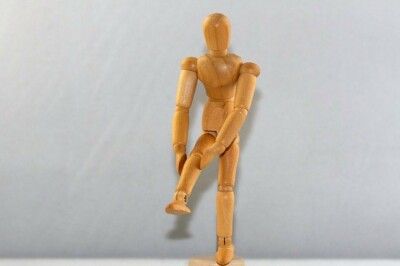Often underestimated: Jumper’s knee (patellar tendon syndrome)
Patellar tendinitis, colloquially known as jumper’s knee, is one of the more common injuries suffered by amateur and professional athletes in the knee region. Early recognition and treatment prevent long painful breaks from the beloved sport.
What is patellar tendon syndrome?
So-called jumper’s knee is an injury to the patellar tendon, which is located just below the kneecap. In the course of time, the condition of this tendon deteriorates more and more if left untreated, until it ultimately threatens to tear.
Therefore, it is enormously important for the affected person that the doctor makes the right diagnosis early on and treats correctly. But also the correct preventive handling of the knee and other joints can protect the individual from this type of injury.
Here it is still to be emphasized that it is not exclusively an injury in competitive athletes. Even and especially amateur athletes can contract such an injury out of ignorance. They often do not know the limits of their body and are looking for quick successes, which is why they often overdo it.
How patellar tendon syndrome develops
Patellar tendinitis is primarily caused by excessive or incorrect loading of the knee. Those who train too much, too intensively or with too rapid an increase in performance risk injury.
Also, too short breaks between training sessions are not necessarily good, as well as quite banal wrong movement patterns during and after a jump. The latter can be, for example, unaccustomed, sudden movements.
The overload or incorrect loading then initially leads to inflammation of the patella tendon, which can develop into a real problem in the long term.
Other causes for the development of patellar tendinitis can be a lack of mobility and strength. This is especially the case with sports beginners or after breaks due to illness.
Symptoms of the so-called jumper’s knee
Incipient symptoms usually only appear when there is already long-term irritation. Inflammation of the tendon tip leads to pain below the knee. Initially, these changes only occur under stress and are also of weaker intensity at first.
Over time, the pain becomes more severe, now occurring after strain and becoming more persistent. At some point, the pain is chronic.
In a microscopic image you would already see that the structure of the tendon begins to change. It degrades until it eventually tears if left untreated.
Preventive measures
Patellar tendinitis can be prevented primarily by avoiding overloading and incorrect loading of the knee. That means, before the sport it is important to warm up sufficiently and gently. Especially when jumps of any form are part of the sport, warming up should not be neglected.
In addition, a clean jumping technique is crucial. It prevents excessive shocks and loads on individual body parts. Training days should be followed by rest days. A sufficiently long and relaxed sleep also promotes the daily regeneration of the body.
Performance increases should be slow and gradual. Especially after a disease, you should not want to put your body through too much again too quickly.
Strength training should also be practiced regularly. Stronger muscles and good mobility prevent injuries during sudden movements.
Of course, healthy nutrition should always be taken into account. Finally, an over-acidified body cannot regenerate well and also cannot reduce inflammation. A lack of minerals also makes it difficult to supply the body with nutrients.
Treatment methods for the patellar tendon
Treatment of the patellar tendinitis is usually very difficult and very lengthy. This is due to the fact that patients usually go to the doctor very late with it. Already at the first symptoms, sports that put a strain on the knee should be stopped immediately.
However, complete immobility is also not good for the tendons in the long run. Once symptoms have subsided, exercise can also be resumed, but with a slow increase in performance. The later the problem is recognized and taken seriously, the less chance there is for the tendon to heal.
Convalescents should therefore hone their technique. In addition, adequate muscle building is indispensable to relieve the strain on the tendon. Strength training and increasing mobility are therefore the be-all and end-all in this case. Overweight people should first avoid exercises that put too much stress on the joints and the knee.
Conclusion
Patellar tendon syndrome is by no means just a condition that occurs in high-performance athletes. It can affect anyone who regularly participates in sports that involve knee strain.
Therefore, do deliberate and prudent sports with the appropriate rest periods.
